Best Embroidery Stitches For Script Lettering
March 15, 2022
In the world of embroidery, there are two types of line stitches. Those that like to bend or curve, and those that don’t. This post is all about the best embroidery stitches for script lettering. That means we are going to be talking about bendy, curvy line stitches. Let’s jump in.
Chain Stitch
Chain stitch is my number one embroidery stitch for script lettering. I use it every chance I get. Chain stitch makes a beautiful line. Each stitch just blends into the next. It works great for large thick stitches made with 6 strands of thread and thin little stitches made with 3 strands of thread. I love how it seems to sit on top of the fabric, giving the line of stitching distinct edges.
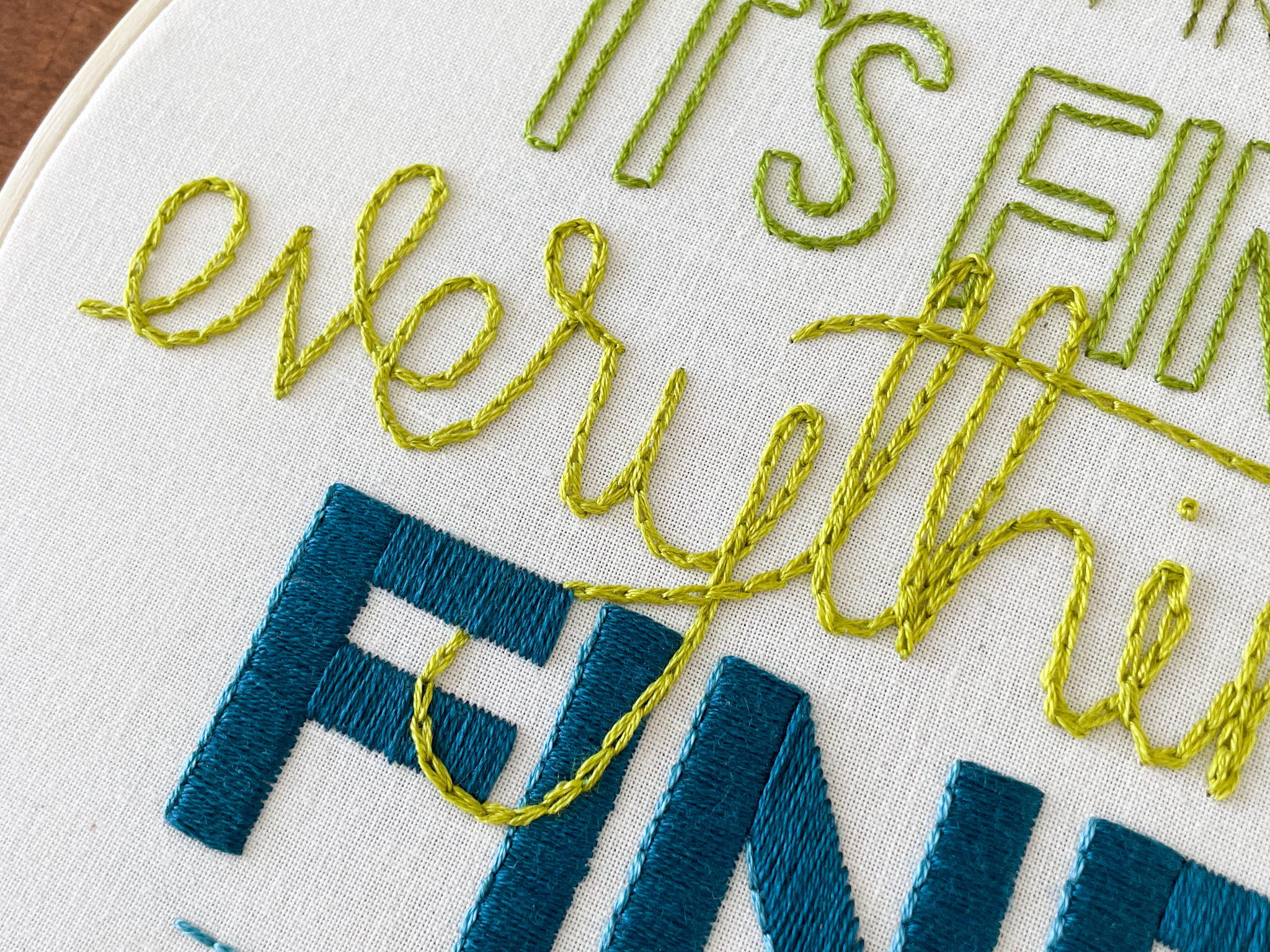
Chain stitch is especially wonderful for overlapping lines in words where the letters are all connected. Because chain stitch is all connected, each overlap stands out making an extra special texture.
Backstitch
Because backstitch is so common in embroidery it can get a bad wrap for things like script lettering. What we tend to forget is that backstitch is common for a reason, it works on any line. Backstitch is great for getting around all the small curves of script lettering. You can easily make as many tiny stitches or big stitches as needed. This is extra true if you are stitching with a dark thread and the ends of each stitch start to visually blend together.
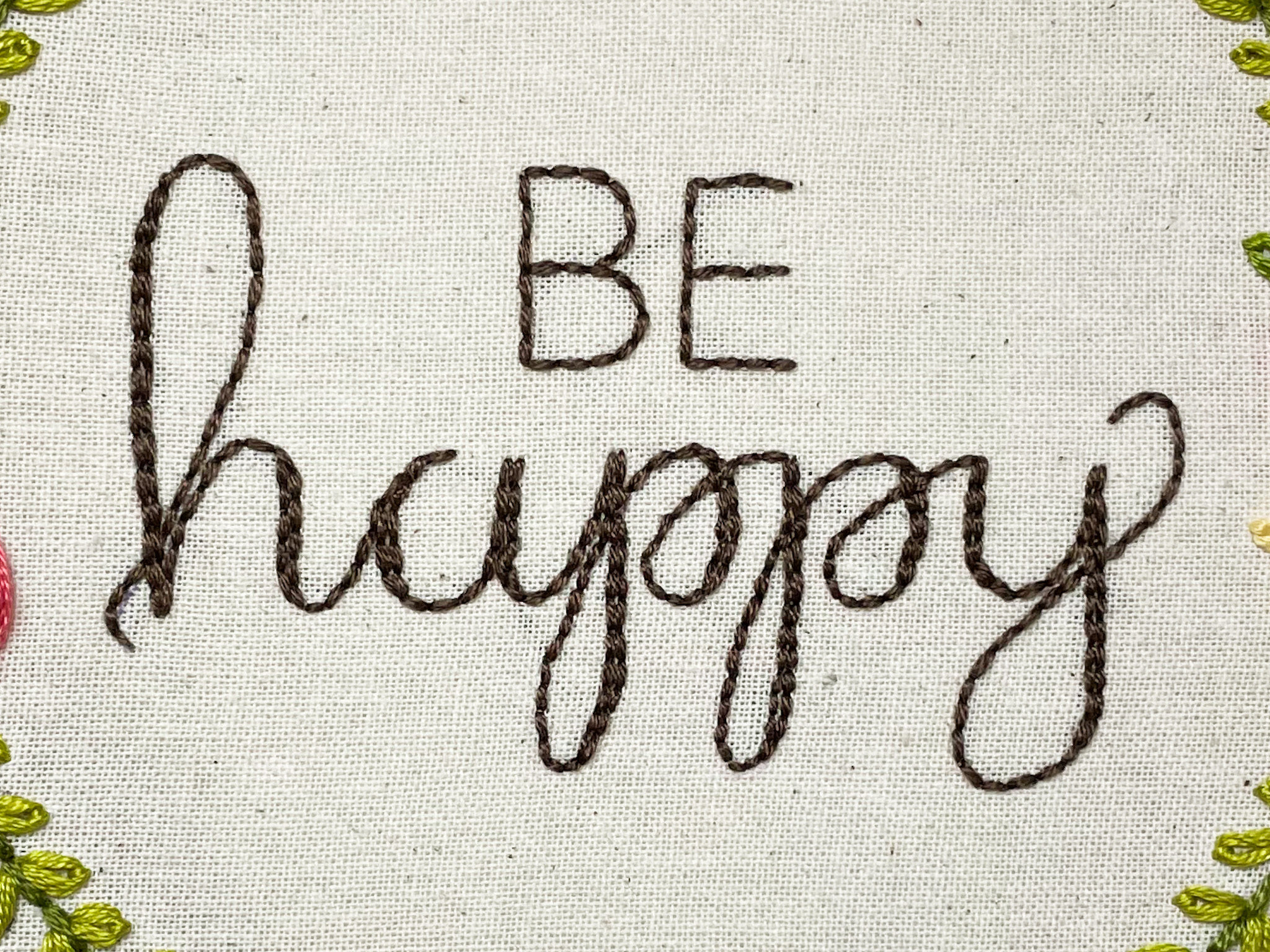
My favorite part of backstitch for script lettering, is its ability to accent the thick and thin nature of calligraphy. Because each backstitch isn’t connect to the others, it allows you to taper the edges of your shapes without having weird half stitches.
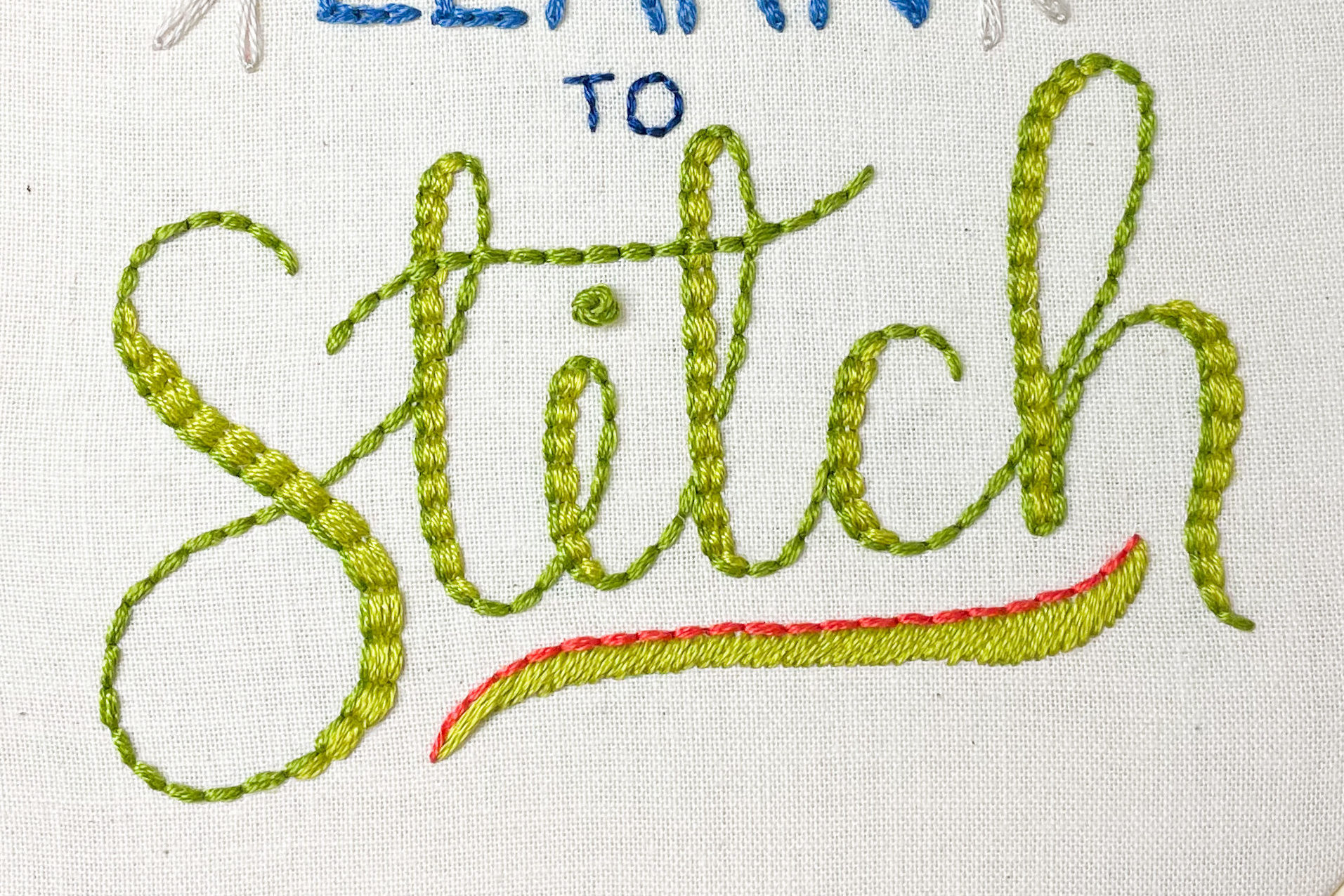
Check out the right edge of the letter “h” above. See how it seamlessly blends from 1 stitch thick to 4 stitches thick? That is the special talent of backstitch.
Whipped Backstitch
Let’s talk about an untraditional embroidery stitch for script lettering. Whipped backstitch is regular backstitch elevated. Like traditional backstitch, whipped backstitch allows you easily vary your stitch length to any curve. Then, the whip stitch comes back through making the line of stitching look seamless and perfect. The end result is similar to a section of thread being wound around and set down on the fabric.
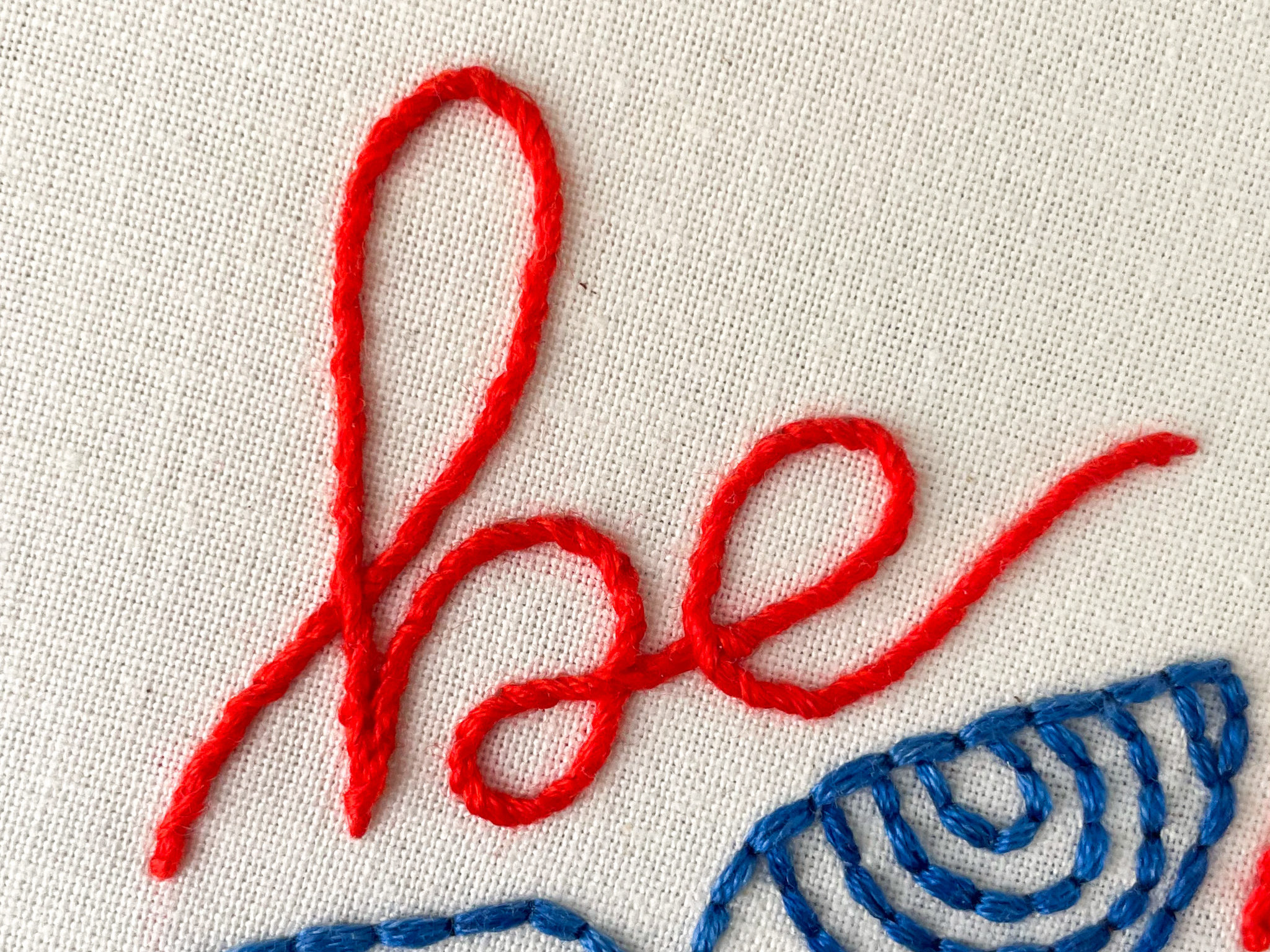
Stem Stitch
Like chain stitch, stem stitch is a connected stitch. Each stitch runs into the next giving it a twisted rope feel. Because each stitch is connected to the next, stem stitch is particularly suited for curves. Half of the needle points are covered by stitches, making your stitch length feel small and precise. I also love how this stitch sits up off the fabric. It makes it stand out from its neighbors, accenting whatever it is you are trying to say.
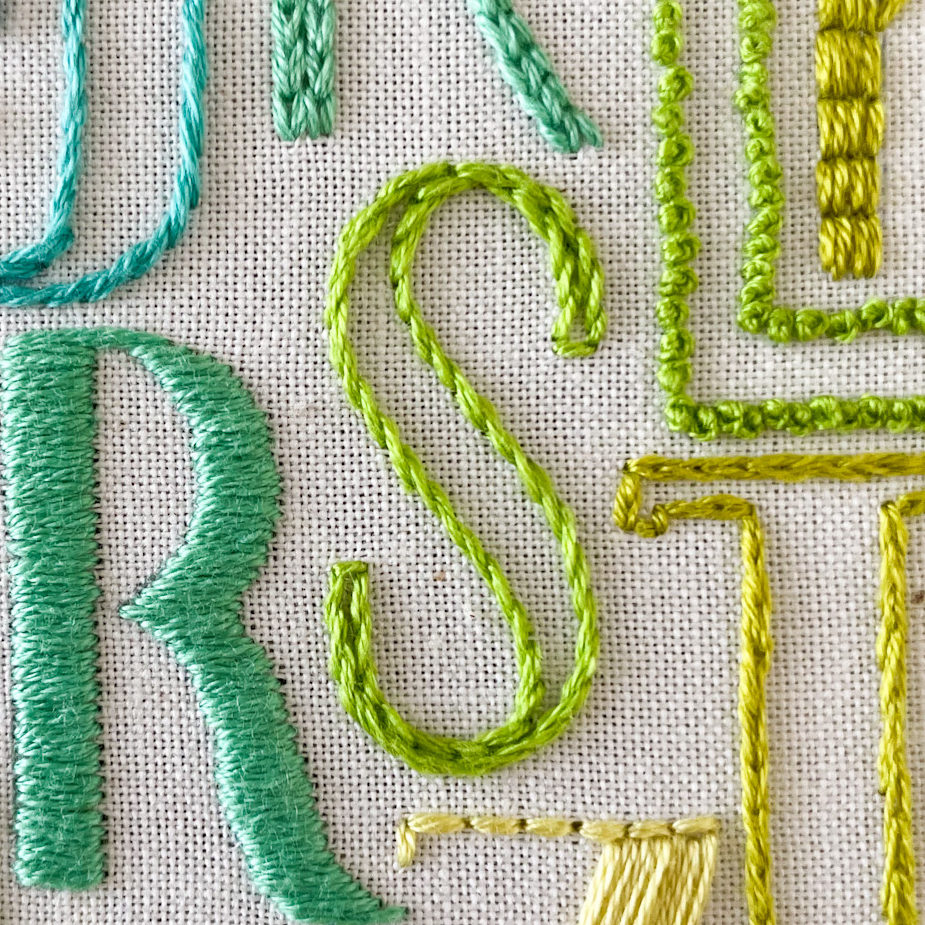
Pick with your heart
Though the stitches I presented in this blog are great for curvy lines, they are by no means the only stitches you could or should use for script lettering. One of the very best parts of embroidery is that you get to decide what works best for you. You get to have favorite stitches and favorite ways to use them. So, if you don’t like any of these stitches, don’t worry, there are plenty more to choose from. Take my words as a grain of advice and then pick with your heart.
More tips and tricks
Want to learn how to make your lettering look amazing every time? Check out this post for 5 Tips For Making Embroidery Lettering.
Thank you for a very informative post. I’m going to look at the other posts you referenced as well. I’ve drawn my own letter for the front of a large needle book that will also hold lots of other tools. And I am obsessing over the letters. Lol
I love these scripts. Plan to use these.
Hi, I live near Cape Town Area, South Africa
Where can I learn to embroider like this?